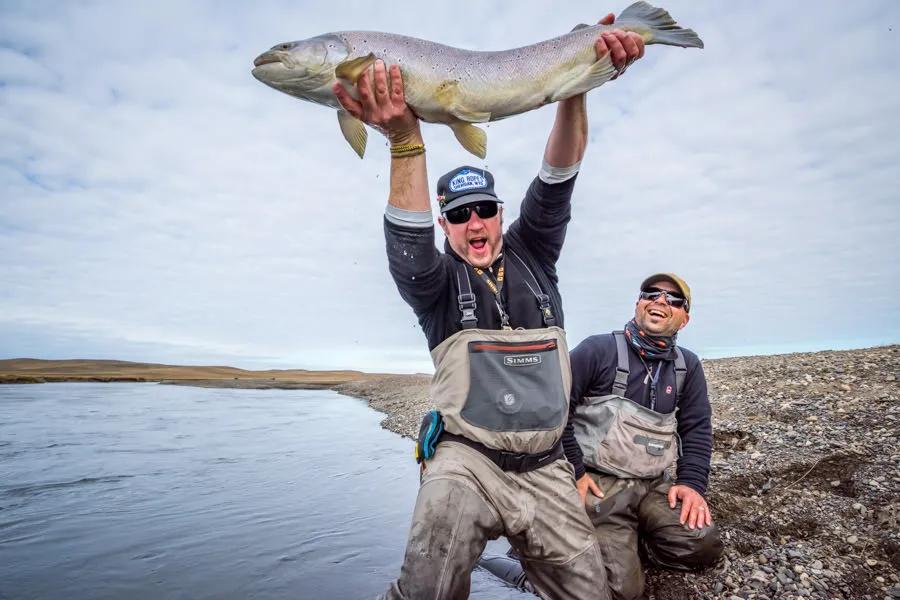
Fly fishing is much more than catching really big trout, but the fun factor definitely hits 100% when you tie into the biggest fish in the run. Every red blooded fly fisher person should have the luxury of experiencing fighting and landing a truly massive trout at some point in their life. One of the fallacies in the angling world is that you need to be an expert to catch exceptionally large wild trout. When it comes to landing the trout of a lifetime the where, when and how is much more important than skill level.
Big fish are special because there simply aren’t a lot of them. The rarity of a very large fish increases the uniqueness when you actually hook into one. Even though the hooking and landing a truly monster fish is never easy, there are a few tips that can stack the cards in your favor.
Tip 1: Don’t show up to a gunfight with a slingshot
If you are serious about chasing big fish make sure that you rig your gear appropriately. Big fish pull hard and snap your tippet easily. It is important to supersize your rig to match the supersized fish that you are chasing. While it is possible to land a 2 foot brown trout on 6x tippet, the odds are definitely not in your favor. A good rule of thumb is to fish the heaviest tippet that you can reasonably get away with. If you are sight casting to a big trout rising during a hatch try running 4x when everyone else is fishing 6x. If you are streamer fishing, why mess with anything less than 0X? Make sure that you change out frayed leaders and tippet often. Check your knots and use a reel with a good drag and plenty of backing.
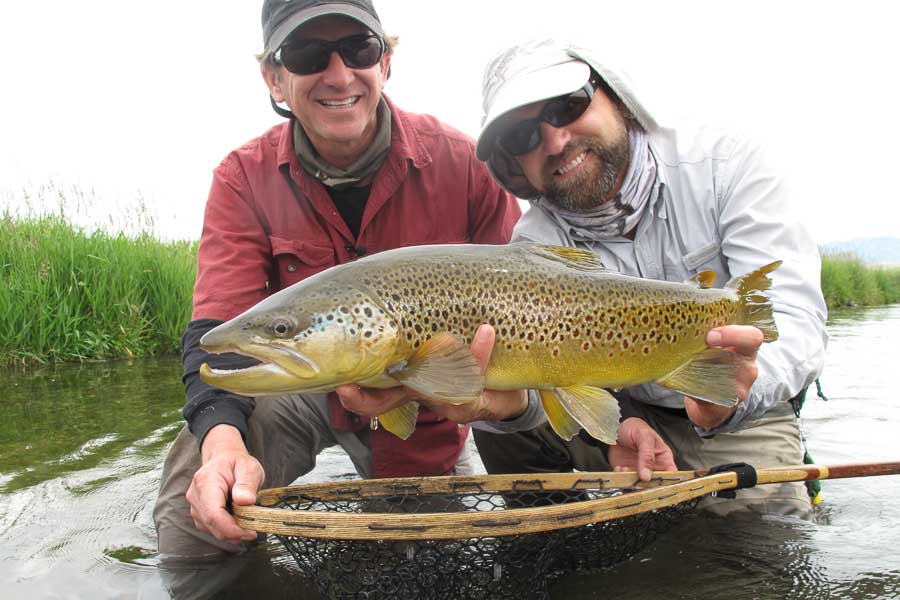
Tip 2: Fish streamers often
Once a trout reaches a certain size, the calories that they expend to intercept a small aquatic insect exceeds the caloric intake of the morsel of food. Essentially feeding on insects becomes a zero sum game for big fish. Larger trout, with a few exceptions, tend to focus on larger meals. Really big trout often behave like a large python: they eat one huge meal every few days. Often that huge meal is another unsuspecting trout. On more than one occasion I’ve had large 20-24” trout attach a 10-12” trout that was hooked. If you put your time in fishing really large streamers you will reduce your overall fish count, but you will increase the number of trout over 20” that you land in a season.
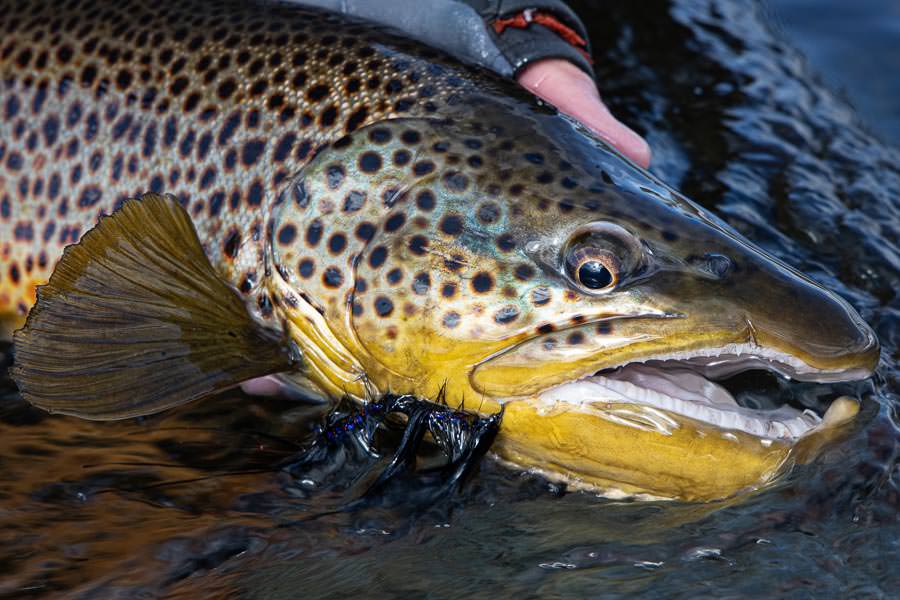
Tip 3: Hunt for big fish during heavy hatches
One exception to the previous rule that big fish eat big meals is during a prolific hatch. When there is a blanket hatch even the largest trout can be enticed to the surface. Although each individual insect is relatively small, when a hatch is intense even large trout will benefit by surface feeding if they can consume hundreds of bugs without much effort. If you want to land a big fish during a heavy hatch you need to be disciplined. Smaller trout will be much more aggressive and can produce splashy eye catching rises. Small trout often end up in pods or groups which can easily attract an angler when a large number of rises entice us to make a few casts. Really large trout are both lazy and solitary. A large 20+” trout will rarely be in a group of rising fish; they are nearly always by themselves. Furthermore they need to conserve energy if they are eating smaller bugs so expect to find them in slow currents. To complicate matters the largest trout often make the smallest disturbances when they rise. When hunting for big fish during heavy hatches seek out slower runs, tail-outs and flats. Often big fish will slide into very shallow water during a big hatch. Look for small dimples away from other rising trout. Also do some listening; large trout will produce an audible gulping sound during a rise. Once you find a big fish time the rise pattern. If the trout is rising on a 20 count you should begin your casting rhythm on a 15 count, drop your cast on the 18 count and get ready for the take on the 20 count when your fly drifts into range of the feeding fish.

Tip 4: Fish in October
If you love catching big brown trout there is no better month than October. Browns are fall spawners with the peak of spawning activity in November. Several weeks before the spawn begins browns begin to migrate upriver or out of lakes into rivers. This is a great time to target big fish. The big fish also become more aggressive so swinging big streamers through deeper holding water can pay off. October doesn't produce more fish but it produces more big fish.
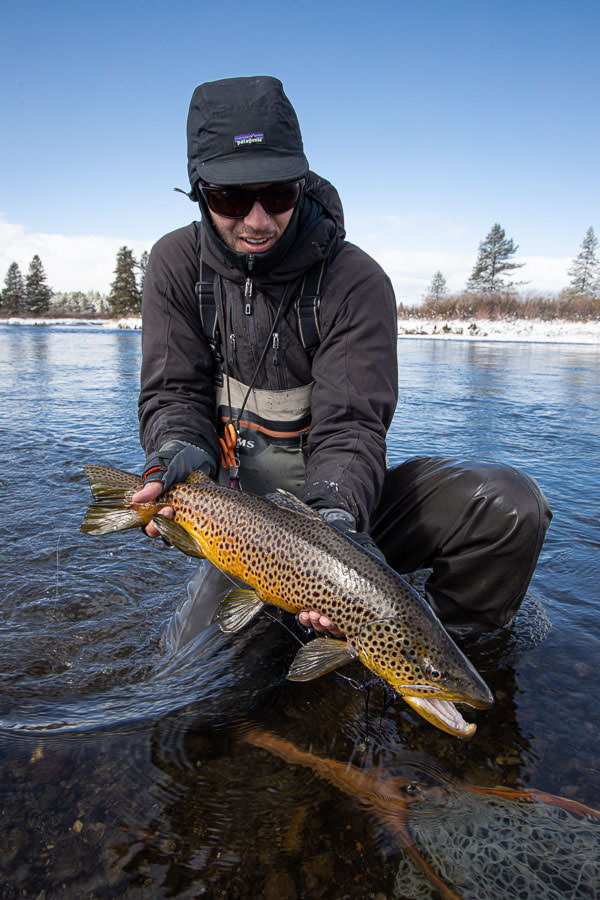
Tip 5: Seek out “Mega” hatches of supersized insects
The vast majority of hatches will only entice huge trout if they are blanket hatches but lets toss in one more exception to the rules listed above! There are a handful of IUSs (Insects of Unusual Size) that will turn the head of even the largest of trout. If you seek out salmon flies, eastern green drakes, hexagenia mayflies or even late summer hoppers you can find some really large trout. The beauty of these Mega hatches that the insects are so large they can entice huge fish but still small enough that the trout still need to eat several of them before they get full (vs. eating one 10” trout in the middle of the night which then takes 2 days to digest). Every time a huge trout decides to eat you have a chance to catch it. If a big brown trout is exclusively feeding on other fish they take fewer meals and your chances of intercepting a them when feeding is reduced. If that same big brown is rising to green drakes they may need to consume 100 of the big mayflies to fill their belly so you now have 100 tickets in the lottery instead of just one!

Tip 6: Fish after dark
Big browns are notorious for feeding at night. The larger the brown trout, the less they tolerate high sun. They often become nocturnal during large durations of the season. The best time to night fish is during the dog days of summer when warmer daily water temps produce further incentive for big fish to hunt at night. It pays to know the water you fish well when night fishing. Focus on a handful of “big fish runs” that you are comfortable wading without a light. Avoid using a headlamp when fishing after dark. Although mousing at night tends to make the instagram feeds, streamer fishing produces more fish. I like big and bulky black streamers that produce a good silhouette and push a lot of water when night fishing. If you tie your own bugs try using some large wool or deer hair clipped heads and some reversed soft hackle “fins” as rudders to push water.

Tip 7: Call in sick on rainy days
As previously noted big browns prefer feeding in low light. If you are lucky enough to encounter a drop in pressure with grey skies and a steady drizzle during the dog days of summer stop what you are doing and go fishing. These are big fish days and often the largest trout in the river will go on a one day feeding binge. I’ve experienced the most intense “big fish” days in mid summer when the normal weather pattern is bright sun day after day. When you have a sudden change to low pressure and dark skies the big fish can go bananas. Regardless of the season grey skies produce more big browns.
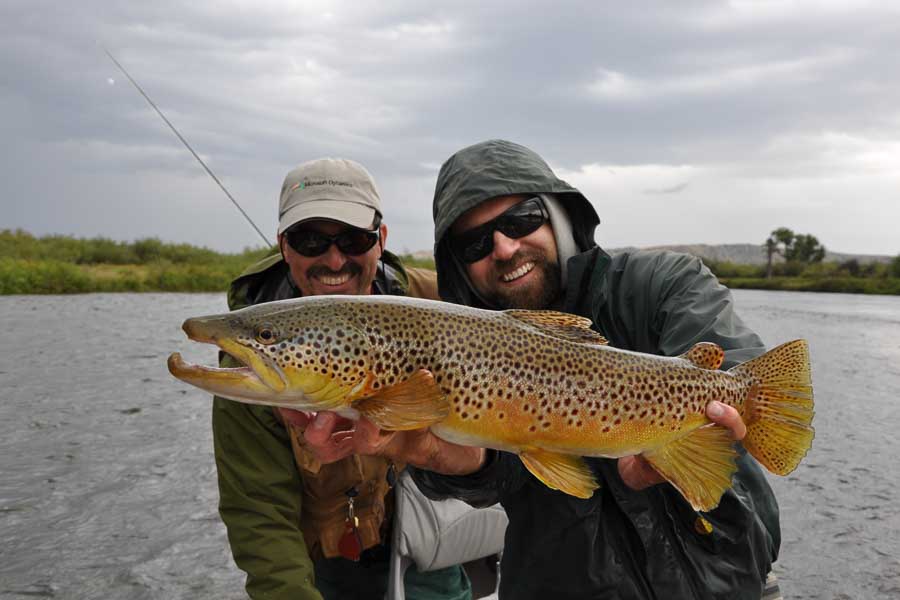
Tip 8: Focus your efforts on big fish waters
If you are gunning for a really big trout make sure you spend your time on waters that hold big fish. Throwing 10 inch streamers on a small mountain stream probably won’t produce the desired results. If you are fishing on your home waters don’t rule out the lower reaches of the biggest fisheries in the area. Often the downstream waters begin to get warm and trout counts drop off. Although trout numbers on lower reaches of rivers may drop, size can go up. Some waters just have a reputation for really big fish. There is a tiny spring creek that we fish from time to time that holds lots of small trout and a handful of massive browns. The big browns basically make their living eating the smaller 10” rainbows.

Tip 9: Take the trip of a lifetime to legendary big fish waters
If you want to blow up the bank account consider making the trip of a lifetime to a few destinations on earth that are notorious for producing enormous wild trout. When we travel to Lago Strobel (aka Jurassic Lake) in Argentina, the Rio Grande in Tierra del Fuego (also Argentina), the Bristol Bay region of Alaska or the South Island of New Zealand we expect to tangle with some of the largest trout on the planet. There are a few special regions on earth that have the perfect environment for growing trout really big. These trips aren’t cheap but they are guaranteed to be special.

Tip 10: Pay your dues and put in the time
Really large trout generally make up less than 1% of the total fish population. To complicate matters trout eat less frequently as they grow larger. A small trout may eat tiny morsels throughout the day and thus presents an angler numerous opportunities to catch it. A massive 26” brown trout may only eat a few times per week as it hunts larger fish as its prey. To catch really big fish you need to be at the right place at the right time with the right fly. Often that means putting in lots and lots of time. While you can use the tips listed above to increase the odds, there are no shortcuts and no replacement for putting time on the water. This is easier said than done; sticking with a 10” streamer and going fishless for hours on end while your buddy in the front of the boat is pulling in smaller trout all day on his nymph rig takes a lot of discipline. I have found that you need to mix up your fishing. Make sure to still go out and toss small dry flies on a mountain stream to enjoy the other beautiful aspects of the sport and get some “action” under your belt. If you have enough days of “catching” it makes it easier to sustain the long durations of nothing when you hunt big fish.
On a final note I do need to express a few cautionary notes before encouraging you to chase really big wild trout. Generally the tactics that you need to catch a true monster trout also come with a sacrifice of not catching smaller fish. The time required to put a big trout in the net can put some stress on our relationship with your significant other. When you keep showing up with a seven weight and lob sinking heads and 8" streamers while your buddies are trying to nymph zebra midges you can strain a few friendships. Hunting big wild trout isn’t for the faint of heart so if you really want to experience a truly big trout make sure that you know what you are signing up for; no one said the addiction to huge trout was a healthy one!
